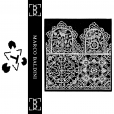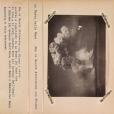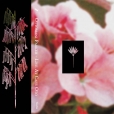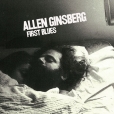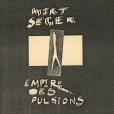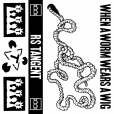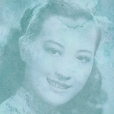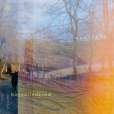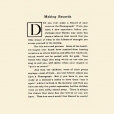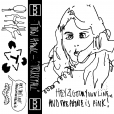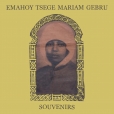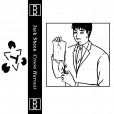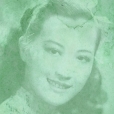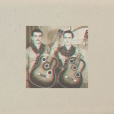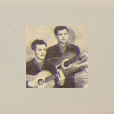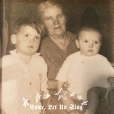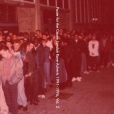Your basket is empty

Honest Jon's has enrolled with the European Union 'Import One-Stop Shop'. For EU customers, this means that you will not be charged any additional VAT or duty, nor any handling fees. No further costs.
Emahoy Tsegue-Maryam Guebrou
Church Of Kidane Mehret
Mississippi
Her 1972 private-press LP, plus two unreleased piano recordings, mapping out a deeply personal take on Ethiopian Church Music.
Here is Emahoy’s most directly sacred and spiritual music-making — and some of her most moving — self-recorded in churches across Jerusalem, on piano, harmonium, and pipe organ.
With extensive biographical notes by Thomas Feng. Beautifully remastered. Old school tip-on jacket with silver-foil stamping. Black or clear vinyl.
‘We first became aware of the Florence-based composer Marco Baldini via the incredible Another Timbre label.
‘His albums, Vesperi and Maniera, blew us away. Maniera, Marco’s second album for the label consists of seven chamber works for strings, beautifully played by Apartment House. If you haven’t heard it go straight to Another Timbre’s Bandcamp and check it out! Vesperi, Marco’s first release on Another Timbre, from around a year before is also absolutely unmissable, it’s comprised of three pieces derived from works by 16th century Italian composers alongside original compositions.
‘Both albums have provided much needed calm in turbulent times. Marco kindly accepted our invitation to compile a mixtape, and here it is! Thank you so much, Marco!’
With Arthur Russell, Bob Dylan, Anne Waldman, Perry Robinson, David Amram and co, having a whale of a time in sessions which sound like the best kind of parties, between 1971 and 1981.
‘Rags, Ballads & Harmonium Songs. Chanteys, Come-All-Ye’s, Aborigine Song Sticks. Gospel, Improvisations, Renaissance Lyrics, Blake Hymns, Bluegrass, Hillbilly Riffs, Country & Western, 50’s R&B, Dirty Dozens & New Wave.’
The first-ever full vinyl reissue; gatefold sleeve. Photography by Robert Frank!
Plaque is a young Bristol label which knows what’s what; always worth checking.
Tiny runs so look sharp.
‘Founder of KUMP and Meth.O tapes, Lyon’s Marc-Étienne Guibert (AKA Gil.Barte) awakens his new Mert Seger moniker for a shadowy Plaque excursion. Nine slow burners strike from the murk with venomous precision.’
Swaying, haunting tangos from Turkey, from the twenties to the fifties, drenched in tears and booze, regret and recrimination.
‘The latest wonderful album from Chester’s Carl M Knott, after a series of superb releases for labels such as Mortality Tables, Waxing Crescent Records, and Subexotic Records, including the marvellous Kullu from earlier this year.
‘Wonky acoustic guitar, broken electronics, and a warm, otherworldly space; at once strange and experimental, yet melodic and somehow comforting. Intimate and evocative, deeply personal; at once bucolic and bang-up-to-date, like Kraftwerk dreaming about sheep.’
“We enjoy spending time in the woods with our young children, creating stories about the ‘eye tree’. This tree, with thousands of eyes, watches over us and cares for us like family. We make fox medicine and cherish these blissful moments. The music reflects these times, seen through the colors of an old, fuzzy reel — orange, red, and yellow with blurred edges, like an old photo scorched by the sun.
“I feel a deep spiritual connection to the countryside; the hands of Arcadia cradle me when I feel sad. Some of the album was created during times of sadness when I felt death was close and the lines between worlds were blurred. This feeling — that anything can happen and that life is delicate and can be taken away in a flash — permeates the music.
“The song titles are stories and memories of my family, filled with hazy pinks, yellows, reds, and oranges.”
‘Just over half an hour of Luke Wyatt nattering — talking over, against, and to himself — interspersed with slyly deployed SFX, and quotes from his own musical recordings. A wild, uncannily cohesive, funny-sad excursion, issuing from a childhood memory, and somehow taking in the ’86 Mets, WIlliam Rehnquist, and Boy Scout regalia, amongst much else, in a hilarious, poignant affirmation of the spiritual prequisite of self-expression.’
‘Emahoy recorded these songs direct to cassette tape in her family’s home in Addis Ababa in the late 70s. She carried the master tapes with her when she entered permanent exile in Jerusalem in 1985. They stayed in her tiny cell at the Church of Kidane Mehret until her passing, in March 2023, aged 99.
‘I was on my way to see Emahoy and talk about the release of these songs when she passed away. While helping her family clear and pack her belongings, we found the original master tapes, from which this album is produced. Intimate, close, home recordings. You can hear Emahoy’s finger pressing down the stop button, the creak of her piano bench, birds out the window.
‘These are songs of mourning and exile. The Ethiopian Revolution of 1974 had changed her country so radically that Emahoy sang of missing home even though she was still physically in the country.
‘Emahoy wanted badly for these songs to be heard. She was proud of them, and even produced a tiny run of private press CDs sold at the gift shop of the monastery in 2013. But her family and those closest to her advised her against the release, worried about the intense backlash she’d receive for singing as a nun in the conservative Orthodox church.
‘Finally, these recordings get the release they deserve. We hope to do justice to the music and Emahoy’s legacy with this release — packaged in a reflective gold sleeve, with a sixteen-page booklet featuring lyric translations and photos of Emahoy’s life in the monastery in Jerusalem.’
(Cyrus, Mississippi Records).
Grieving, hushed, involving music for voices, field recordings, and white noise, performed by Kantos.
Riding in resplendently on the cassock tails of The Gospel According To Budgie mixtapes and The Good Books (with Alchemist): still deeper, giddier blends of nineties gospel and nu bounce. Back in.
‘Shidaiqu means ‘songs of the era’: a hybrid musical genre arising in the cosmopolitan city of Shanghai in the late 1920s, blending traditional Chinese elements with western pop, jazz, blues, and Hollywood-inspired film soundtracks. It represented a musical and cultural merging that would go on to shape a golden age of Chinese popular song and film in the interwar period.
‘Waiting For Your Return ranges from early beginnings — like the 1927 recording Drizzle, often considered the first shidaiqu 78, composed by Li Jinhui and performed by his daughter Li Minghui — through to more polished examples in succeeding decades, by such stars as Bai Hong, Wu Yingyin, Yao Lee, and most prolifically Zhou Xuan.
‘The recordings here reach up until the shidaiqu’s local demise in the early 1950s, when the Chinese Communist Party denounced it as ‘yellow music’, outlawing nightclubs and the manufacture of pop music, and destroying western-style instruments. At this point many of these singers decamped to Hong Kong, enjoying further success throughout the 1950s and into the 1960s.’
‘Back in the early ‘90s, whenever the pirate radio MC announced ‘a pause for the cause’, I usually pressed pause on my cassette recorder. That’s something I would regret years later, when ad breaks had become cherished mementos of the hardcore rave era. Luckily, back in the day I often left the tape running while I went off to do something else. So a fair number of ad breaks got captured accidentally for my later delectation. Not nearly enough, though. So in recent years I started combing through the immense number of pirate radio sets archived on the internet.
‘A few of my original unintended ‘saves’ and latterday ‘finds’ are included in this wonderful collection, focusing on the audio equivalent of the rave flyer: MCs breathlessly hyping a club night or upcoming rave, listing the lineup of deejays and MCs, boasting about hi-tech attractions like lasers and projections, mentioning prices and nearest landmarks to the venue, and occasionally promising ‘clean toilets’ and ‘tight but polite security’. Some of these ads are etched into my brain as lividly as the classic hardcore and jungle tunes of that time. Names of deejays ring out like mythological figures: Shaggy & Breeze, Kieran the Herbalist, Tinrib, Food Junkie…
‘These ads capture the hustling energy of an underground micro-economy; but most of all they are hard hits of pure nostalgic pleasure, amusing and thrilling through their blend of period charm, endearing amateurism, and contagiously manic excitement about rave music’s forward-surge into an unknown future. The best of these ads give me a memory-rush to rival the top tunes and MC routines of the era’ (Simon Reynolds).

